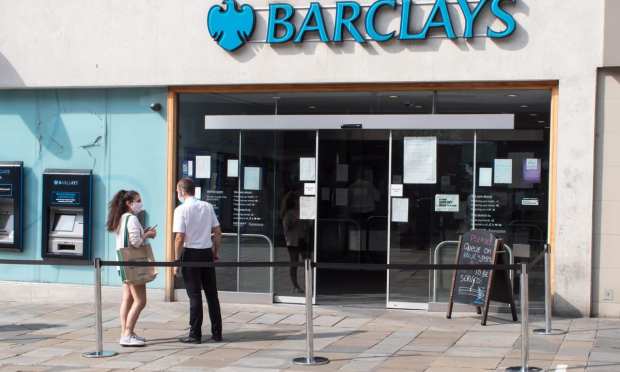Barclays Pairs With Amount To Create White Label For BNPL Platforms

The growing and increasingly competitive buy now, pay later space sees a pair of entrants this week teaming up to take on the segment together. Barclays U.S. Consumer Bank will be teaming up with BNPL technology firm Amount to make Barclays one of the first consumer banking players in the field to dip into the growing market for point-of-sale (POS) installment financing options with an option of their own for merchants. Under Barclays BNPL offering, merchants will offer consumers POS installment options under their branding instead of under the BNPL firm.
“Nearly one-third of U.S. consumers have already used a buy now, pay later service, and the demand is expected to continue to grow as consumers become more comfortable with the transparency and ease of use of flexible payment options,” said Denny Nealon, CEO of Barclays U.S. Consumer Bank in a released statement Tuesday (April 27). “The time is right to enter the U.S. market and give consumers customized, loyalty-driven transparent POS installment loan programs at some of the country’s most successful travel, entertainment, retail and affinity institutions.”
Barclays bet that its partner-centric approach will put the BNPL product under their partner’s branding, offering merchants a solution designed to drive sales and build loyalty.
“Our new banking solution is built off of our promise to provide services that match our consumers’ lifestyles and purchasing habits to create and reward loyalty rather than merely providing a new transactional revenue channel,” said Nealon. “Barclays presents an opportunity to drive more customer loyalty and intimacy with the brand that will help them drive sales. We’re excited to extend our presence in the BNPL marketplace alongside Amount, a developer that has the technology and knowledge to provide consumers and merchants with a mutually beneficial purchasing process.”
Amount’s financial technology platform will underpin Barclay’s entrance into BNPL services, including fraud prevention, verification and account management services.
The platform is expected to go live with merchants later this year.
“There have been seismic changes across the payments landscape with consumers embracing and expecting seamless digital experiences. The rise of mobile and online shopping, combined with an increase in digital adoption was quickly accelerated by the global pandemic,” said Adam Hughes, CEO of Amount in a statement. “This has created an environment in which POS is the next battleground in consumer financing, wherein banks are well positioned to compete given their stability and cost-of-capital advantages. We share a similar consumer-centric approach to execution, and we’re honored that Barclays chose to partner with Amount.”
It’s another bit of news in the BNPL segment that seems to be running at an announcement-a-minute pace. Affirm announced this week a partnership with Ulla Johnson, Uplift and Southwest Airlines launched a partnership, Chrissy Teigan and PayPal announced an arrangement for the supermodel-turned-influencer to bump PayPal’s BNPL solution at her Cravings online stores.
And while BNPL purchases represent a small slice of the credit market when stacked up against options like traditional credit cards — it is a segment clearly in a profound growth spurt, particularly among younger consumers. PYMNTS research has found millennial and Generation Z shoppers use BNPL at higher rates than older generations, with 15 percent of millennials and 5.7 percent of Gen Z consumers using BNPL in-store compared to only 3 percent of older generations.
And that use, PYMNTS latest Buy Now, Pay Later Tracker demonstrates BNPL is on a definite upswing — up by more than 200 percent in the last year. The study also predicted that the use of installment payment plans and other points-of-sale financing online would continue to expand worldwide, and reach $680 billion worth of eCommerce spending globally by 2026, nearly double the value today.
BNPL is particularly popular for certain types of transactions. A December survey found that 47 percent of U.S. shoppers used these plans to purchase home furnishings, while 20 percent used them to pay for electronics. Some 44 percent of respondents reported they turned to installment payment methods because they lacked the cash for the purchases, while other consumers preferred BNPL options because they saw them as more appealing than other credit options or wanted to avoid credit card debt.
The segment is still small, but becoming ever more popular among the most desirable demographic of consumers settling into their prime spending years. That it’s an attractive market for Barclays is certain, but it will be an easy market to enter into is far from assured — the BNPL space that was virtually empty as recently as a half-decade ago is getting filled with players offering similar-looking options and offers to consumers.
Standing apart in the field for Barclays will be a challenge — though one its partnership with Amount may be able to successfully enable, given the firm’s specific industry track record for allowing players to move with great haste such that their new solutions can be up, running and in the field ready for use within a window of a few months. The platform is advertised as underpinned fraud prevention, verification, decisioning engines built to quickly launch a performance-optimized product across categories.
Barclays may also benefit from its willingness to stand in the shadows and offer its solution as a white label to merchants — as their willingness to let merchants own the customer relationship could certainly prove appealing, particularly when ranked against the BNPL offerings that pull the consumer out of the regular flow of commerce at the point of conversion. Barclay’s wouldn’t be the only player in the game choosing to step back into the shadows a bit — PayPal’s move is similar — but it might prove vital to giving it a boost into position in a BNPL race it is already joining a bit late.
